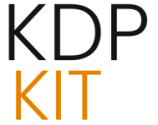
The Financial Blueprint: Deconstructing Self-Publishing Expenditures
One of the most persistent myths in the indie world is that self-publishing is synonymous with “free publishing.” While platforms like KDP are free to upload to, creating a truly competitive, professional-grade product that can compete in today’s crowded market demands a tangible, unavoidable financial outlay. Understanding where money must be spent versus where it can be thoughtfully saved is the difference between a hobby and a business.
Cost Analysis for Editorial and Design Professionals
The necessary upfront investment is overwhelmingly skewed toward securing professional-grade editorial and design work. Anything less than professional quality is a direct signal to the market that the content is amateur, and the market will price you accordingly.
Consider the core creative costs:
- Editing: A comprehensive editing package for a standard-length novel or complex non-fiction title will easily range from $1,200 to over $2,000. This spectrum covers developmental editing (big-picture structure), copyediting (sentence-level flow and grammar), and the final, crucial proofreading pass. You can skimp here, but every error left behind is a dollar lost from future sales, as reviewers notice quickly.. Find out more about realistic self-publishing costs 2025.
- Cover Design: While template-based cover designs can sometimes be sourced for as little as $50, this often places you in the same visual category as the lowest-priced, lowest-quality competition. A fully custom, market-optimized cover from a top-tier designer—one who understands the technical requirements for both e-book thumbnails and high-resolution print wraps—can cost $1,000 or more.
For an author seeking a premium, hands-off experience that genuinely emulates traditional publishing quality, the total expenditure for these crucial creative services alone frequently falls into the $2,000 to $3,000 range. Investing wisely here directly correlates to the perceived quality of the final product and its potential for breaking through the noise.
Budgeting for Essential and Optional Pre-Launch Expenses
Beyond that core creative outlay, several other elements require specific budgetary allocation as you move toward launch day. These are the necessary administrative and marketing functions.
- Formatting: This is a modest but necessary expense to ensure your manuscript renders perfectly across different devices and print specifications. Typically, professional e-book and print file conversion costs between $50 and $300.
- Proprietary ISBN Purchase: If you desire brand control and the ability to enable features like “Look Inside” for low-content titles, this is a fixed cost. As confirmed for 2025, purchasing a block of ten ISBNs from Bowker costs $295. This grants you the right to list your imprint as the publisher.. Find out more about buying own ISBN vs KDP free ISBN guide.
- Marketing and Promotion: This is the most variable line item, representing the oxygen your book needs to survive post-launch. This can range from $0—relying purely on organic social media efforts and platform algorithms—to $2,000 or more allocated for paid advertising (Amazon Ads, Facebook Ads), author website hosting fees, and subscriptions to promotional software.
When you tally these elements—assuming professional quality editing and design are prioritized—the realistic minimum cost to bring a high-quality, professionally presented book to market in 2025 can easily start around $1,600. For the more comprehensive self-publishing journey, which includes significant marketing spend and perhaps hiring for interior design details for low-content work, total expenses often accrue between $2,800 and $5,300. These figures are not obstacles; they are the cost of entry for treating authorship as a serious, profitable business venture.
The Specialized Realm of Low-Content and Activity Book Publishing
The segment encompassing journals, planners, logbooks, and puzzle books has seen explosive, sustained growth. It attracts a wave of creators looking for efficient entry points into the market. However, the strategies required here differ significantly from narrative publishing because the product’s value proposition is structural, not narrative.
Adapting Strategy to Recent KDP Royalty Adjustments for Print. Find out more about Shopify direct-to-consumer sales for authors tips.
The announced reduction in the KDP print royalty rate for lower-priced books—dropping the rate from 60% to 50% for books under the $9.99 threshold, effective June 10, 2025—introduces a direct challenge to the economic model of many low-content publishers. Historically, pricing near $8.99 maximized discoverability via volume, but this price point now yields significantly less profit unless the author adjusts their strategy.
What should the low-content creator do now? First, utilize the new KDP royalty calculator to precisely model margins at various price points. Second, seriously consider adjusting prices upwards to retain the coveted 60% royalty tier, provided your market research supports that higher price point for your specific journal or planner niche. Third, and perhaps most strategically, pivot to leveraging print-on-demand services integrated with your own Shopify stores. This moves you entirely outside of KDP’s specific tiered royalty structure, allowing for direct profit control, as we discussed in the previous section on direct-to-consumer publishing strategies.
Furthermore, in this sector, understanding the nuances of KDP’s operational changes is essential. Targeted reductions in color printing costs for certain marketplaces are opening up new design possibilities for visually rich products like intricate planners or activity books. Calculating the cost savings on color print jobs versus standard black-and-white can unlock profitability in niches previously too expensive to pursue.
Integrating Artificial Intelligence into Rapid Content Generation
A defining feature of low-content publishing in 2025 is the massive, almost mandatory, reliance on artificial intelligence tools to dramatically accelerate the creation process. Manually creating hundreds of repetitive interiors or brainstorming niche-specific prompts used to consume days; AI now offers a solution to slash that creation time down to mere minutes. AI can generate unique interior layouts, devise fresh prompts for gratitude journals, create custom coloring page concepts via integrated art tools, and even assist in brainstorming saturated niche ideas based on current market velocity data.
This speed allows a single author to test a wider variety of product concepts in the market with unprecedented velocity—moving from abstract idea to uploaded file faster than ever before. However, this speed must be balanced with rigorous quality control. While AI generates the bulk of the structure or initial content, the human author must perform the final curation. You must ensure the output is relevant, error-free, and possesses the necessary aesthetic design quality to compete against other professional submissions.. Find out more about KDP vs personal e-commerce profit margins strategies.
Remember the legal safeguard: Purely AI-generated content is currently ineligible for copyright protection in the US; your value is in the human element. The best practice, confirmed by IP experts in 2025, is to adopt a hybrid authorship model: Use AI for drafting and ideation, but ensure you substantially rewrite, structure, and curate the content with clear creative intent. You must maintain logs of your prompts and edits to prove this human creativity if ownership is ever challenged. For low-content work, this means being the *designer* and *curator* of the AI-generated patterns, not just the prompter.
Launch and Sustained Marketing Strategies for Visibility in the Algorithm Age
Publication is not the finish line; it is the starting gun for the most important race of your publishing career. Visibility on algorithm-driven platforms like Amazon is rarely achieved organically for new titles; it must be engineered through proactive, strategic effort applied both before and after the launch date. Organic reach is earned, but initial traction is bought with planning.
Developing a Comprehensive Pre-Launch Promotional Timeline
To gain the necessary initial momentum—the surge of sales and positive engagement that algorithms reward upon release—you cannot improvise on launch day. A successful strategy requires a comprehensive promotional plan developed weeks, or even months, in advance. This pre-launch period is about setting the stage for success.
Your pre-launch checklist should mandate the following:. Find out more about Realistic self-publishing costs 2025 overview.
- Advance Review Copies (ARCs): Line up book bloggers, early readers, and contacts who have committed to providing authentic reviews immediately following publication. This social proof is vital currency on retail pages.
- Foundational Online Presence: Ensure your entire digital hub is operational before the book goes live. This means a functional, professional author website—your owned real estate—and a clear, easily accessible call-to-action within the book itself, directing readers to an email sign-up form.
- Metadata Finalization: You must have finalized your selection of keywords and categories, ensuring they accurately position the book for maximum algorithmic discoverability *before* the launch traffic hits. Getting this wrong means your hard work is invisible.
Rushing this phase is the equivalent of building a beautiful, professional-quality book and then choosing to display it face-down in the corner of a vast warehouse. The upfront coordination is what forces the initial algorithm spotlight onto your title.
Post-Launch Momentum: Reviews, Author Websites, and Ongoing Engagement. Find out more about Buying own ISBN vs KDP free ISBN definition guide.
Once the book is live, the marketing focus pivots from anticipation to sustained, relentless momentum. Securing those early, authentic reviews remains perhaps the single most important factor, as they provide the necessary social proof to convert hesitant, first-time buyers browsing the page.
The author website must serve as the central command hub of your entire enterprise. It is the only property you truly own, capable of housing your newsletter archives, your direct sales links (for the Shopify sales), and a complete portfolio of your works, regardless of platform exclusivity. This central anchor is crucial for building long-term author equity, separate from your Amazon Author Central page.
Beyond that initial launch window—say, the first 90 days—marketing must transition into creative, long-term strategies designed for endurance. This involves continuous, authentic engagement with your readership, perhaps through regular blog content related to the book’s core themes, occasional, strategic price promotions, or the introduction of new companion products (especially relevant for low-content authors). For the low-content publisher, this means constant, disciplined research into new, underserved niches and the steady release of new, high-quality titles to build catalog volume and diversify that revenue stream. The journey of the self-publisher in this dynamic 2025 environment is one of perpetual iteration, where the analysis of sales data—which sales are strong, which are weak—constantly feeds back into the next cycle of creation and promotion. This feedback loop is the secret weapon of the long-term successful indie.
Key Takeaways and Actionable Insights for 2025
Navigating the intellectual property and distribution landscape requires a shift in mindset from “hobbyist” to “business owner.” Here are the final, most critical takeaways you must internalize and act upon today:
- Own Your ISBN: Never rely on a free platform ISBN if you intend to build a brand or distribute widely outside that platform. Budget for a block of ten from Bowker ($295 in the US) as an essential, non-negotiable investment in your brand control and future flexibility.
- Master the KDP Royalty Tiers: With the June 2025 print royalty reduction for books under $9.99, you must immediately audit your print prices to ensure they meet the threshold for the 60% royalty tier, or plan for the lower 50% rate only on your lowest-priced volume sellers.
- Document AI Use Meticulously: If you use AI, your documentation (prompts, version histories, editing notes) is your legal shield. Platforms demand disclosure, and courts will demand proof of human authorship. Hybrid creation is the only defensible path to copyright registration.
- Build Your Direct Channel: Treat Amazon KDP as your primary *retailer*, but treat your Shopify site as your primary *asset*. Customer data ownership on your own site is the key to scalable, long-term passive income that isn’t subject to platform-specific economic shifts.
- Low-Content Strategy Shift: Understand that low-content books are ineligible for KDP Series pages, regardless of ISBN. Your visibility relies entirely on keyword research, ad spend, and constant catalog expansion, not platform-linked categorization.
The market rewards preparation and ownership. Which administrative step—ISBN purchase, royalty calculation audit, or AI documentation protocol—will you prioritize this week to secure your publishing future?





